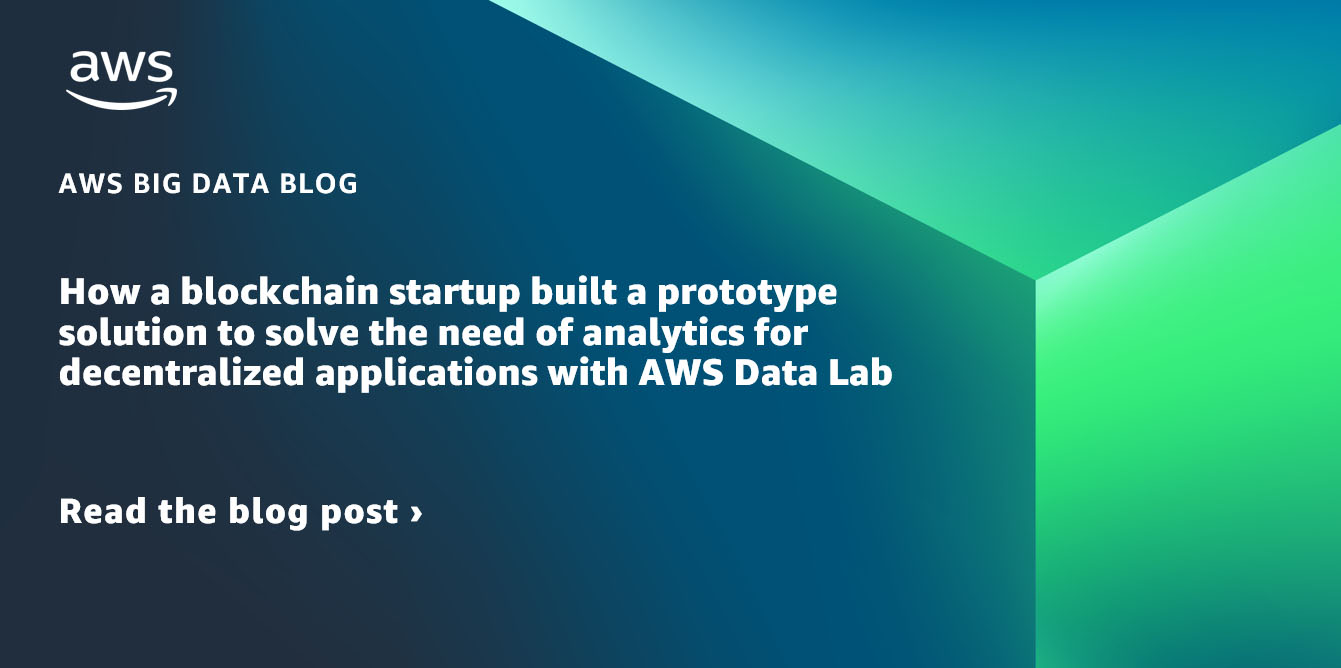AWS Big Data Blog
Deploy DataHub using AWS managed services and ingest metadata from AWS Glue and Amazon Redshift – Part 2
In the first post of this series, we discussed the need of a metadata management solution for organizations. We used DataHub as an open-source metadata platform for metadata management and deployed it using AWS managed services with the AWS Cloud Development Kit (AWS CDK). In this post, we focus on how to populate technical metadata […]
Deploy DataHub using AWS managed services and ingest metadata from AWS Glue and Amazon Redshift – Part 1
Many organizations are establishing enterprise data warehouses, data lakes, or a modern data architecture on AWS to build data-driven products. As the organization grows, the number of publishers and subscribers to data and the volume of data keeps increasing. Additionally, different varieties of datasets are introduced (structured, semistructured, and unstructured). This can lead to metadata […]
How a blockchain startup built a prototype solution to solve the need of analytics for decentralized applications with AWS Data Lab
February 9, 2024: Amazon Kinesis Data Firehose has been renamed to Amazon Data Firehose. Read the AWS What’s New post to learn more. This post is co-written with Dr. Quan Hoang Nguyen, CTO at Fantom Foundation. Here at Fantom Foundation (Fantom), we have developed a high performance, highly scalable, and secure smart contract platform. It’s […]
Use MSK Connect for managed MirrorMaker 2 deployment with IAM authentication
August 30, 2023: Amazon Kinesis Data Analytics has been renamed to Amazon Managed Service for Apache Flink. Read the announcement in the AWS News Blog and learn more. In this post, we show how to use MSK Connect for MirrorMaker 2 deployment with AWS Identity and Access Management (IAM) authentication. We create an MSK Connect […]
Simplify semi-structured nested JSON data analysis with AWS Glue DataBrew and Amazon QuickSight
As the industry grows with more data volume, big data analytics is becoming a common requirement in data analytics and machine learning (ML) use cases. Data comes from many different sources in structured, semi-structured, and unstructured formats. For semi-structured data, one of the most common lightweight file formats is JSON. However, due to the complex […]
Automate Amazon Redshift Serverless data warehouse management using AWS CloudFormation and the AWS CLI
Amazon Redshift Serverless makes it simple to run and scale analytics without having to manage the instance type, instance size, lifecycle management, pausing, resuming, and so on. It automatically provisions and intelligently scales data warehouse compute capacity to deliver fast performance for even the most demanding and unpredictable workloads, and you pay only for what […]
Ingest VPC flow logs into Splunk using Amazon Kinesis Data Firehose
February 9, 2024: Amazon Kinesis Data Firehose has been renamed to Amazon Data Firehose. Read the AWS What’s New post to learn more. December 2023: This post was reviewed and updated to remove the dependency on the AWS Lambda function according to the latest version in Splunk AWS Add-on (7.3.0). In September 2017, during the […]
Introducing runtime roles for Amazon EMR steps: Use IAM roles and AWS Lake Formation for access control with Amazon EMR
You can use the Amazon EMR Steps API to submit Apache Hive, Apache Spark, and others types of applications to an EMR cluster. You can invoke the Steps API using Apache Airflow, AWS Steps Functions, the AWS Command Line Interface (AWS CLI), all the AWS SDKs, and the AWS Management Console. Jobs submitted with the […]
Get started with Apache Hudi using AWS Glue by implementing key design concepts – Part 1
Many organizations build data lakes on Amazon Simple Storage Service (Amazon S3) using a modern architecture for a scalable and cost-effective solution. Open-source storage formats like Parquet and Avro are commonly used, and data is stored in these formats as immutable files. As the data lake is expanded to additional use cases, there are still […]
Build incremental crawls of data lakes with existing Glue catalog tables
AWS Glue includes crawlers, a capability that make discovering datasets simpler by scanning data in Amazon Simple Storage Service (Amazon S3) and relational databases, extracting their schema, and automatically populating the AWS Glue Data Catalog, which keeps the metadata current. This reduces the time to insight by making newly ingested data quickly available for analysis […]









